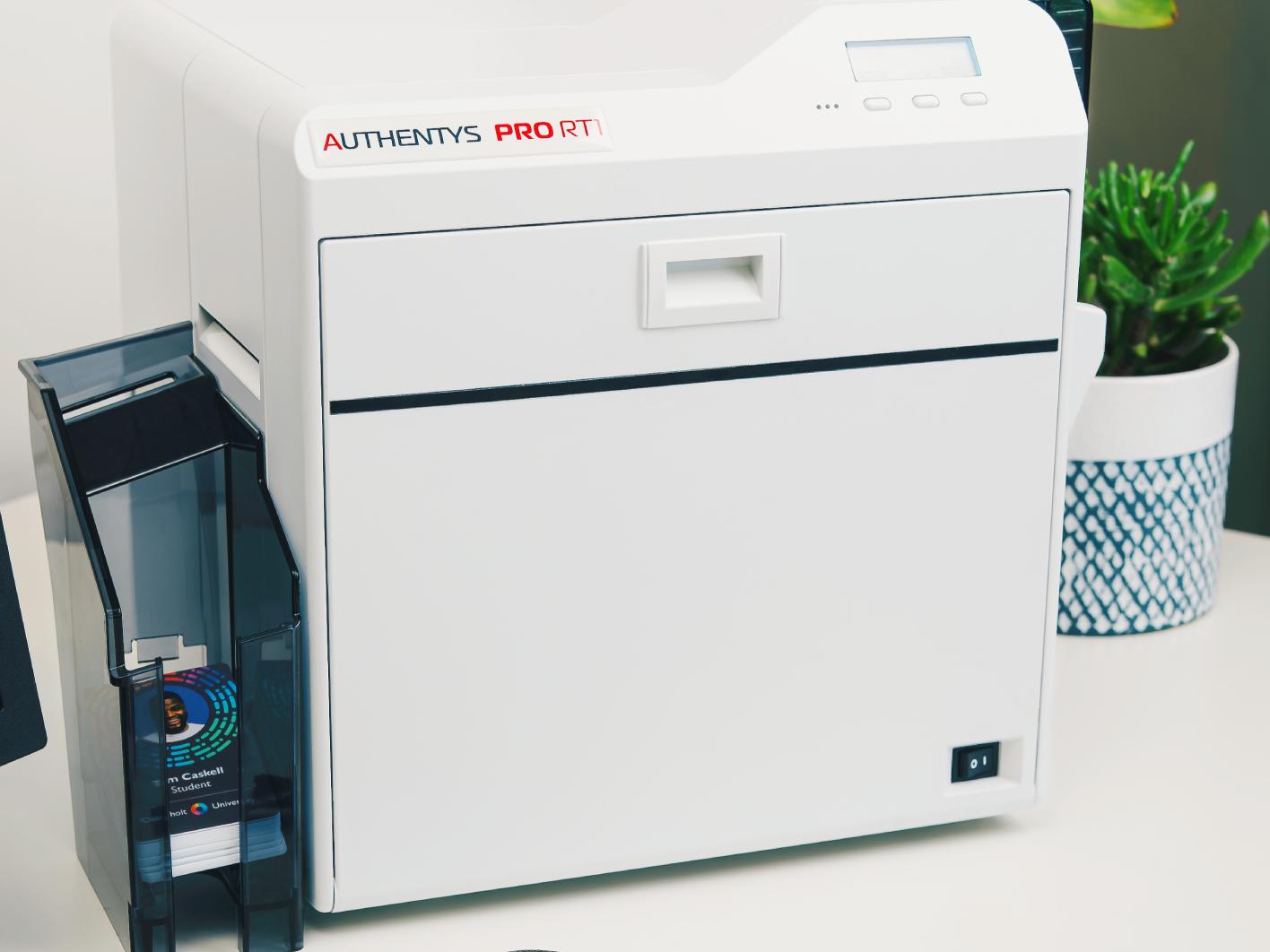
Brian Sims
Editor

Brian Sims
Editor
IN TODAY’S dynamic business landscape, security and identification are paramount for protecting people and workplaces. Given the increasing need for secure ID cards, the demand for high-quality printing solutions has never been higher. Darren Hines delves into why retransfer card printers are on the rise.

Retransfer card printers are gaining traction for several compelling reasons. First and foremost, the rise in security threats has necessitated the adoption of more sophisticated identification measures. Traditional ID cards no longer suffice in an era where forgery techniques are becoming increasingly sophisticated. Retransfer printers offer a higher level of security, producing cards that are more difficult to replicate.
Moreover, the trend towards more complex and visually appealing card designs is driving the demand for retransfer technology. Modern ID cards are not just about security: they also serve as a representation of an organisation’s brand. This means that the quality and detail of the printed cards will be crucial. Retransfer printers excel in this area, delivering superior image quality and edge-to-edge printing that’s unrivalled by other methods.
Advantages of retransfer printers
In order to understand the true value of retransfer card printers, it’s essential to compare them with direct-to-card (DTC) printers:
Superior print quality
Retransfer printers work by printing the image on to a clear film, which is then fused on to the card. This process results in higher resolution images and sharper text. Unlike DTC printers, retransfer technology ensures that there are no white borders around the edges of the card, thereby providing a professional and polished look.
Enhanced durability
The retransfer process embeds the printed image beneath a protective layer, in turn making the card more resistant to ‘wear and tear’. This is particularly important for organisations where ID cards are subjected to frequent handling, such as in corporate environments, universities and Government agencies.
Versatility in card types
Retransfer printers are compatible with a wide range of card materials, including those with uneven surfaces such as smart cards with embedded chips. DTC printers, on the other hand, often struggle with such surfaces, leading to suboptimal print quality and higher error rates.
Improved security features
Security features such as holograms, microtext and UV printing can be seamlessly integrated into the retransfer printing process. These features are crucial in preventing counterfeiting and ensuring the integrity of the ID cards.
As card designs become more intricate, the limitations of traditional printing methods become increasingly apparent. Businesses are seeking ways in which to incorporate detailed graphics, complex colour schemes and secure features without compromising on quality. Retransfer printers are uniquely positioned to meet these demands.
The process of retransfer printing allows for true edge-to-edge printing, which is essential for modern card designs. This capability ensures that the entire surface of the card can be used for branding and security features, providing a seamless and professional appearance.
Further, the high-resolution output of retransfer printers means that even the most detailed designs are rendered accurately. This level of precision is particularly important for incorporating microtext and other security elements that are not visible to the naked eye, but are critical for preventing forgery.
Better investment for businesses
While retransfer printers might come with a higher upfront cost in comparison to DTC printers, they represent a better investment in the long run. Why?
Longevity and reliability
Retransfer printers are built to last. Their robust construction and advanced technology mean that they can handle high volumes of printing without compromising on quality. This durability translates to fewer breakdowns and maintenance issues, subsequently ensuring that businesses can rely on their printers for years to come.
Scalability
As business needs evolve, so do the requirements for ID cards. Whether it’s incorporating new security features, adapting to new card materials or upgrading design aesthetics, retransfer printers provide the flexibility to scale up without needing to replace the entire system. This scalability is invaluable for those businesses looking to future-proof their security infrastructure.
Cost efficiency
Though the initial investment may be higher, the cost per card printed with retransfer technology is often lower in the longer term. The increased durability of the cards means fewer replacements are needed, while the higher print quality reduces the need for reprints due to errors.
Additionally, the versatility in card materials can lead to cost savings by allowing the use of more affordable card stock without sacrificing quality.
In an era where security and identification are paramount, retransfer card printers stand out as the superior choice for businesses looking to protect their people and the workplace. Their unparalleled print quality, durability and versatility render them an indispensable tool in the modern security arsenal.
As card designs continue to become more intricate, retransfer printers offer the only viable solution to meet these evolving demands, while in parallel ensuring a sound investment for the future.
By adopting retransfer technology, businesses not only enhance their security measures, but also invest in a solution that grows with their needs, providing unmatched quality and reliability.
For any organisation serious about security and branding, retransfer card printers are the clear choice for today and tomorrow.
Darren Hines is UK Sales Manager at Digital ID (www.digitalid.co.uk)